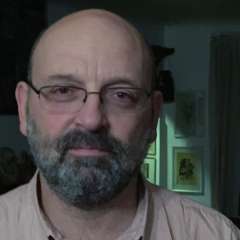Watching Esa-Pekka Salonen joining the musicians of the New York Philharmonic in their first performance after it announced Gustavo Dudamel as its next music director inevitably rekindled some “what if” thoughts. Many considered the Finn a worthy candidate for the position in 2016, when Jaap van Zweden was selected.
Currently the music director of the San Francisco Symphony and a former Marie-Josée Kravis Composer-in-Residence at the New York Phil, Salonen has always thrived to balance the two facets of his career: composing and conducting. Wednesday’s concert featured the US première of his Kínēma for Solo Clarinet and String Orchestra, a 28-minute piece commissioned by the Finnish Radio Symphony Orchestra in 2021. Based on material for a movie score, the five scenes are pretty much independent, although a motif from Dawn, the first tableau, is recalled in Return, the last.
There is no thematic development in what Salonen himself calls “spaces where you can exist for a few minutes”. Nevertheless, with their subdued modernity, each of these soundscapes, occasionally bringing forward reminiscences of Debussy or Stravinsky, is wonderfully atmospheric, balancing elegiac and ebullient sequences. The soloist of this quasi-concerto was the principal clarinetist Anthony McGill, who displayed amazing versatility in the service of a score at times contemplative and at other full of rhythmic drive. McGill's beauty of tone and dynamic range were something at which to marvel. There was no flamboyance in his rendition, and his dialogues with different clusters of the string ensemble were an embodiment of naturalness. Every single clarinet intervention emerged organically from the orchestral layer meant to support it. Salonen could not have asked for a better interpreter for his work, a welcome addition to the clarinet concerto repertoire.
Preceding Salonen’s Kínēma, Berio’s 1975 adaptation of Boccherini’s Ritirata notturna di Madrid was cinematic too, in the sense that the score made one easily envision a film sequence with a fanfare getting closer to your point of observation and then disappearing into the distance. The exercise of “superimposing and transcribing for orchestra” of the four Boccherini versions mentioned in the piece’s title might be just a joke, a scherzo, but it illustrates how old and new can coexist in a post-modern composition.
Beethoven’s Seventh Symphony not only integrates the “old” (Classical) with the “new” (Romantic), but is also a moment of interim between the heroic exploits of his earlier years and the intensity of his late works. Salonen splendidly captured the unique character of the score. Light and elegant, the dances in the last movement were full of passion without becoming a whirlwind of crosscurrents. Contrasts – such as the one between the galloping, lively Scherzo and the majestic, Poussin-rendered like Trio – were clearly stated, but never exaggerated.
Dynamic details were observed with the utmost care; there was a strong overall sense of pace and direction. Despite some instrumental attacks that were not sharp enough, the players responded very well to Salonen’s demands. Transitions were smooth, the sound was never too loud; there was a palpable sense of enthusiasm in interpreting a well-trodden score. Again, the same thoughts crossed my mind. What if Salonen’s name had been added to the list of illustrious composers – Mahler, Boulez, Bernstein – who had been music directors of the New York Philharmonic?




